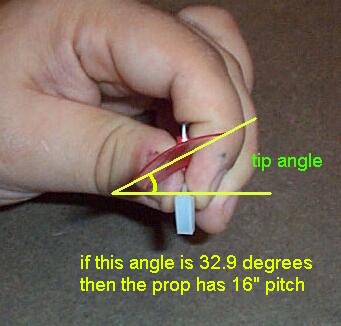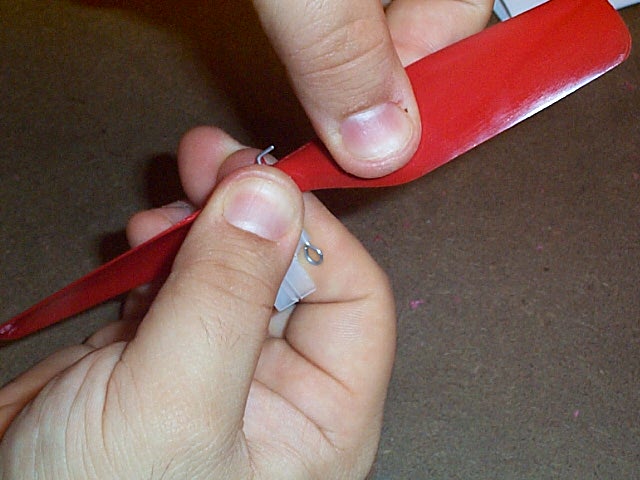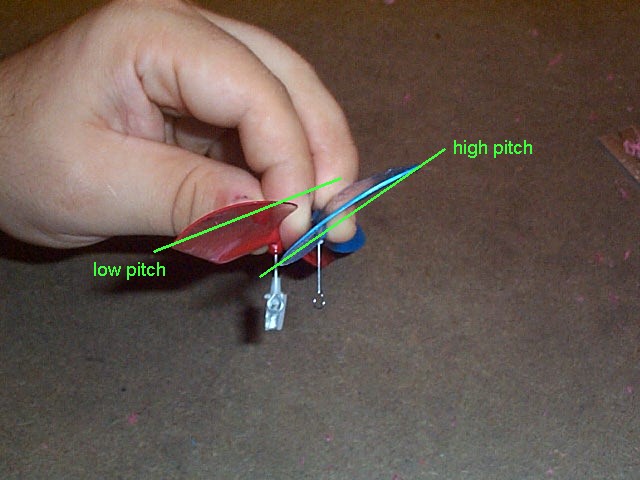
Pitch can be mathematically
expressed as: P = 2 * pi * radius * tangent(B)
The angle B can be expressed
as: B = inversetangent(P/(2 * pi * radius))
For a 20cm diameter prop,
the radius at the tip is 10cm or 3.937", we want 16" of pitch so then the
tip angle would be: B = inversetangen((2/(2*3.1415*3.937))
B = 32.90 degrees
So we want to bend the prop
blades until the tip angle is 32.90 degrees.
This formula can be used
at any other radius as well. It is convenient, however, to sometimes use
the angle to find the radius instead. If you pick 45 degrees, then the
tangent is equal to 1, so the formula becomes P = 2 * pi * radius, or radius
= P/(2 * pi)
For 16" of pitch and a 45
degree angle, the radius would be:
radius = 16/(2 * 3.1415)
= 2.55" or 64.7mm
TRANSLATION: If you measure
2.55" out from the center of the prop, the angle of the prop would be 45
degrees. Also if you measure at the tip of the prop, the angle should be
32.9 degrees.

To change the prop pitch,
you need to twist the blade to the higher angle. The easiest way to do
this may seem crude but it works just great. Basically you hold the prop
at the hub with one hand and grab and twist with the other (see photo below).
Some people soften the plastic with a lighter or some other heat source
to make the twisting easier. I typically scrape
my props down so the plastic is thinner and easier to twist.

Here is a how a repitched
prop compares to the standard pitch prop. You can see the angle difference
in the tip angles. (I have exaggerated the differences a little with a
green line to help illustrate this point.)

And it is that simple. The repitching of the prop will make a great improvement in the flight time of your model. Just make sure that both blades have been repitched equally or the prop may wobble when flying.
Back to the main page.